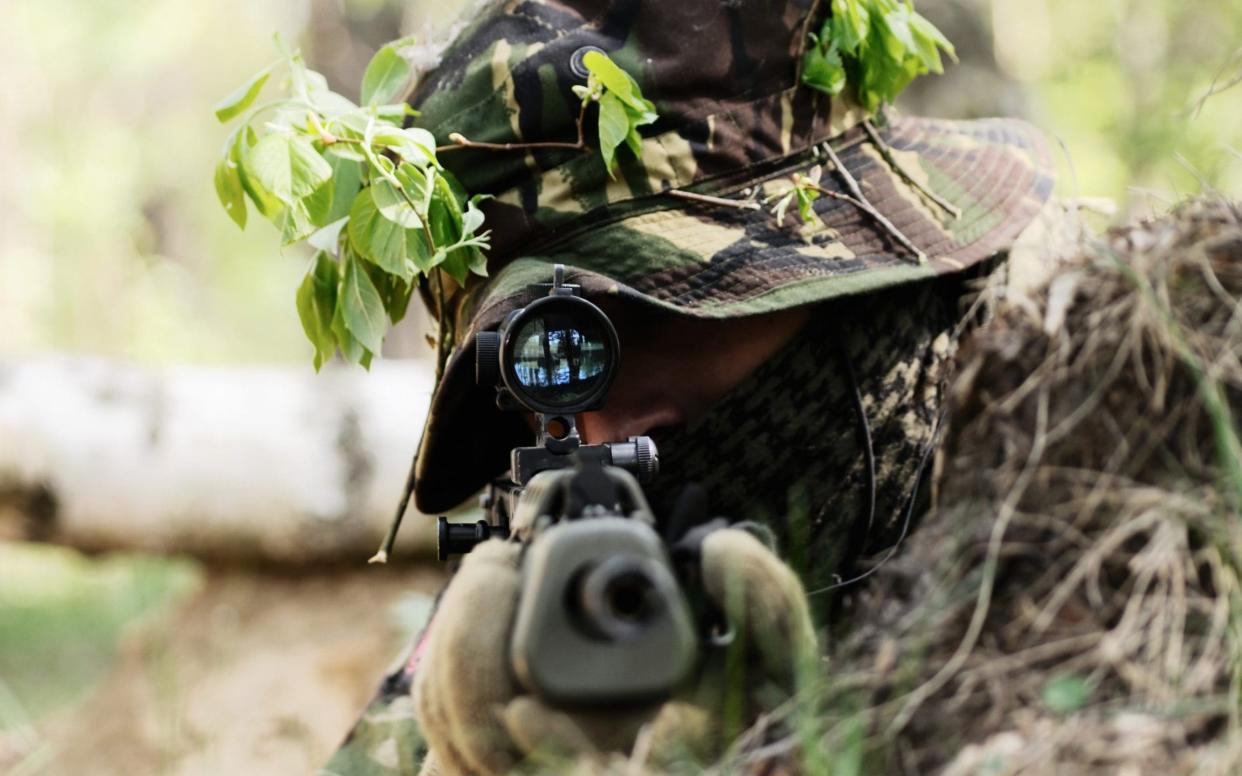SAS faces perfect storm of overstretched troops and shrinking talent pool

The Special Air Service Regiment is facing a perfect storm of being operationally overstretched while recruiting from a shrinking talent pool, senior defence sources have claimed.
Cuts to Army troop numbers mean that Britain’s special forces have struggled to recruit enough personnel to meet their operational and training commitments with both the SAS and the Special Boat Service (SBS) undermanned, defence sources have disclosed.
A Freedom of Information (FOI) request by The Sunday Telegraph has revealed that almost every infantry regiment, from which the SAS recruits the vast majority of troops, is short of personnel, some by almost 100 soldiers.
The FOI reply shows that all five of the King’s Guards regiments are understrength, with the Scots Guards being the worst recruited.
Key units such as tank, artillery and engineering regiments, which also supply personnel to the SAS, are facing troop shortages too.
The Ministry of Defence (MoD) did not include figures for the Parachute Regiment, whose soldiers make up 50 per cent of the SAS, and the Royal Marines, who supply the vast majority of troops to the SBS.
But figures obtained by The Telegraph last week revealed that since 2016, the strength of the Parachute Regiment had fallen by almost a tenth from 2,200 troops to 2,030 in October 2023, while the Royal Marines have fallen by more than 1,000 marines from 7,110 to 6,040.
The Ranger Regiment, which is composed of about 660 personnel and is described by the MoD as “Special Forces capable”, is also facing troop shortages. According to the MoD, the Rangers should be composed of four units of 250 personnel each.
When the war on terror began in 2001, the Army was composed of around 110,000 personnel but the current trained strength of the British Army stands at 73,150, a figure which will reduce to 73,000 by next year.
The last time the Army was this small was in 1770, just prior to the US War of Independence when George III was on the throne and the Army was composed of 48,000 troops.
More now leaving than joining
Meanwhile, the size of the SAS and SBS has remained the same and their operational commitments have increased, although now both units received operational support from the Special Forces Support Group, which is largely composed of Paras.
Both the SAS and SBS are currently deployed in Iraq, Syria, the Baltics and have reported as undertaking training missions in Ukraine.
Troops from the SAS and the SBS also conduct numerous training missions around the world, especially in Africa, where they help train the special forces of the UK’s allies.
Two special forces selection courses are held every year and those who pass are given the option of serving in the SAS or the SBS. Up to 100 experienced soldiers attend each course but fewer than 10 are usually selected and the recent courses have produced even fewer recruits.
Defence sources have said that more members of the special forces are now leaving than joining which is placing SAS and SBS personnel under even more strain.
One source told The Sunday Telegraph: “The SAS is about to be hit by the perfect storm of over-tasking and being understrength – it simply cannot recruit enough personnel because it won’t lower its standards and the talent pool is now too small. Something will have to give very soon.
“It’s alway been a struggle to get enough volunteers of the right calibre to join the SAS and the SBS but it is even harder now.”
Extremely demanding and rewarding
The Special Reconnaissance Regiment, which is also part of the Tier 1 Special Forces Group, has a different selection process and recruits both men and women from all three of the armed forces and so the recruiting pressures are seen as being not as severe.
The SAS source added: “Life in the special forces is both extremely demanding and rewarding but it is not as glamorous as most people, even in the Army, think. It is a continuous round of unrelenting operations and training interspersed with leave.
“The toll is huge and it is little wonder that the regiment has the highest divorce rate in the Army.”
Colonel Phil Ingram, a former Army Intelligence Corps officer who worked with the special forces during his career, said: “A shrinking number of personnel in the military will have a disproportionate impact on special forces recruitment as the pool of potential volunteers is reducing.
“The Paras have survived numerous troop cuts because they are a traditional feeder for SF but this is a growing worry and an unsustainable situation. Modern conflicts need increased special forces – smaller recruiting pools have a severe negative impact.
“This puts more pressure on those already in SF roles and that impacts retention. This is not a healthy cycle for our wider security.”
An MoD spokesperson said: “By spending £75 billion more on UK defence over the next six years, we will be the biggest defence power in Europe, and have already deployed 20,000 personnel this year to the largest NATO exercise in a generation.
“Headline numbers do not define the British Army’s effectiveness and we are already making the Army more integrated, agile, and lethal, helping protect the UK at home and abroad.
“Increasing recruitment and improving retention across the Armed Forces are absolute priorities and we have put in place a number of measures, including improved career opportunities and making it easier for people to re-join, on top of the largest pay increase in more than 20 years.”


